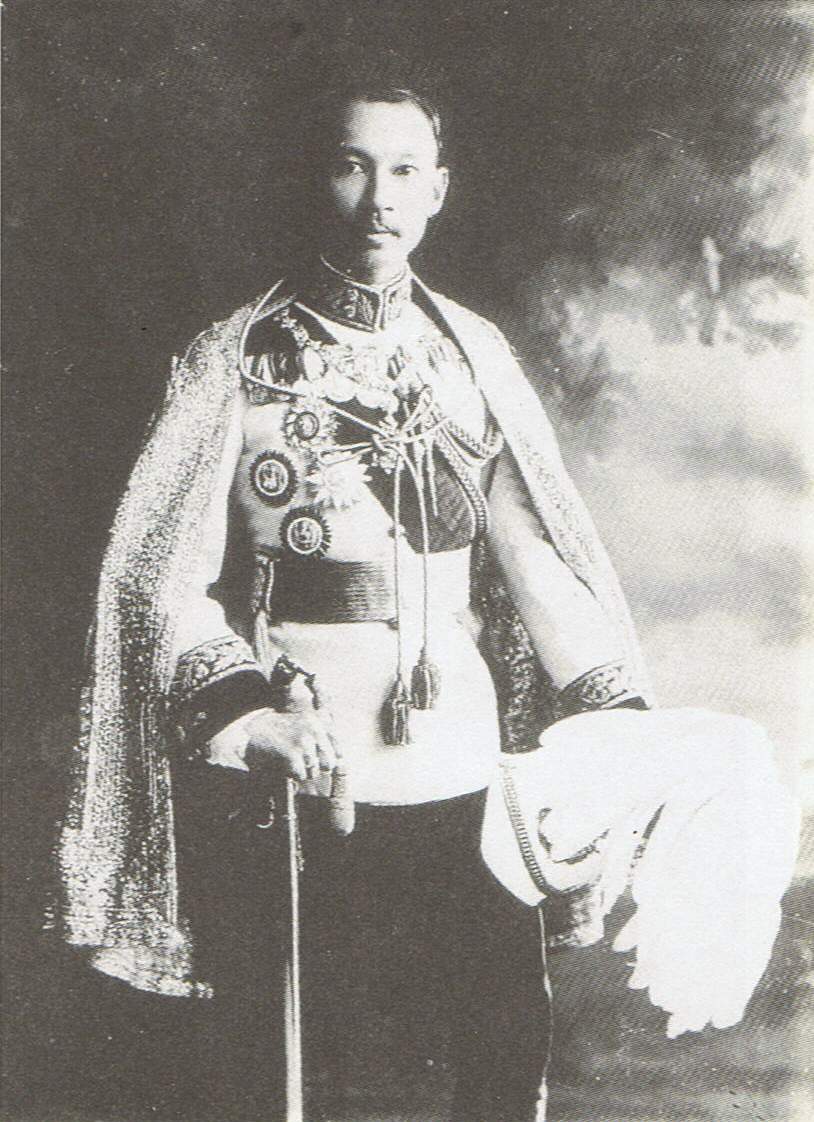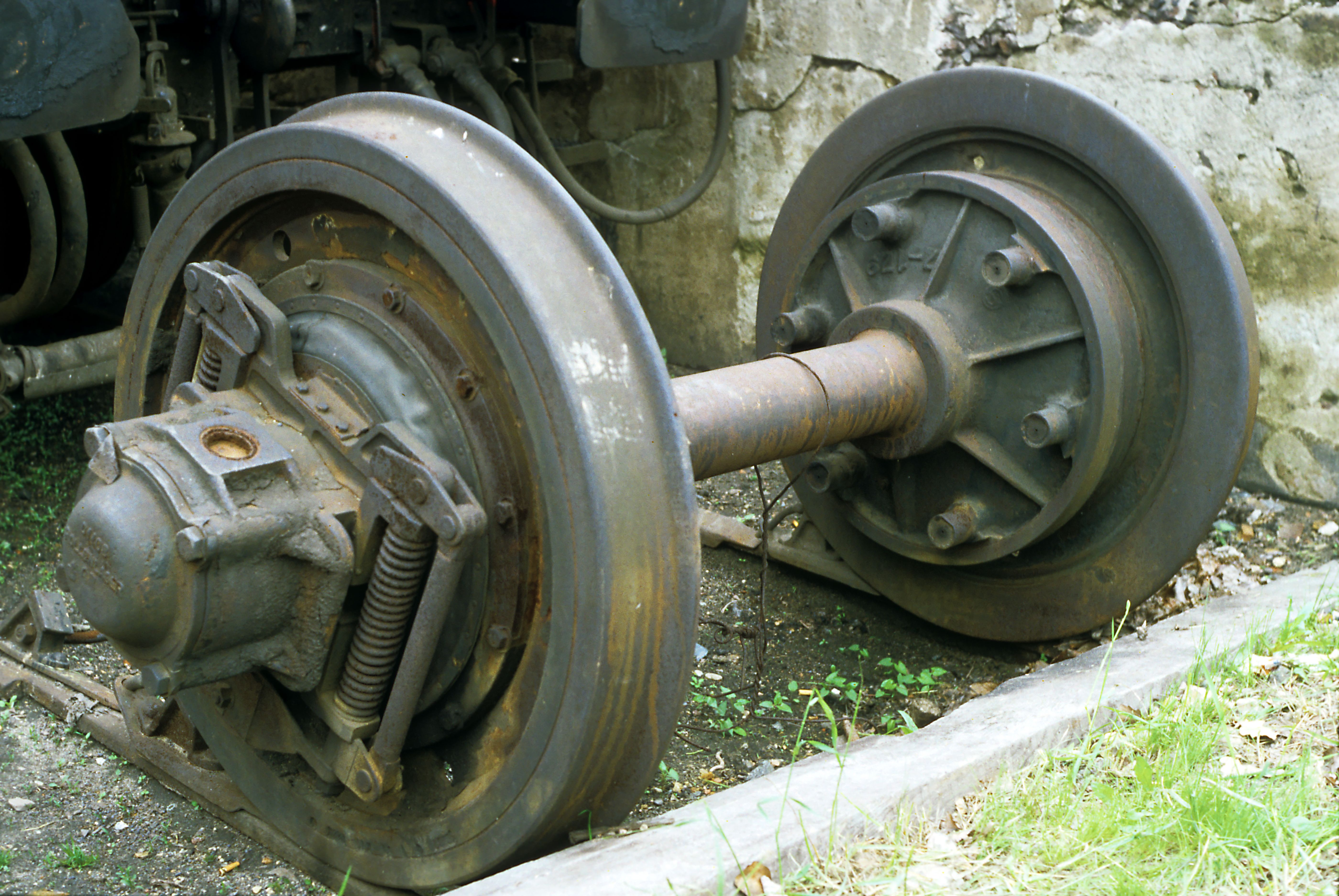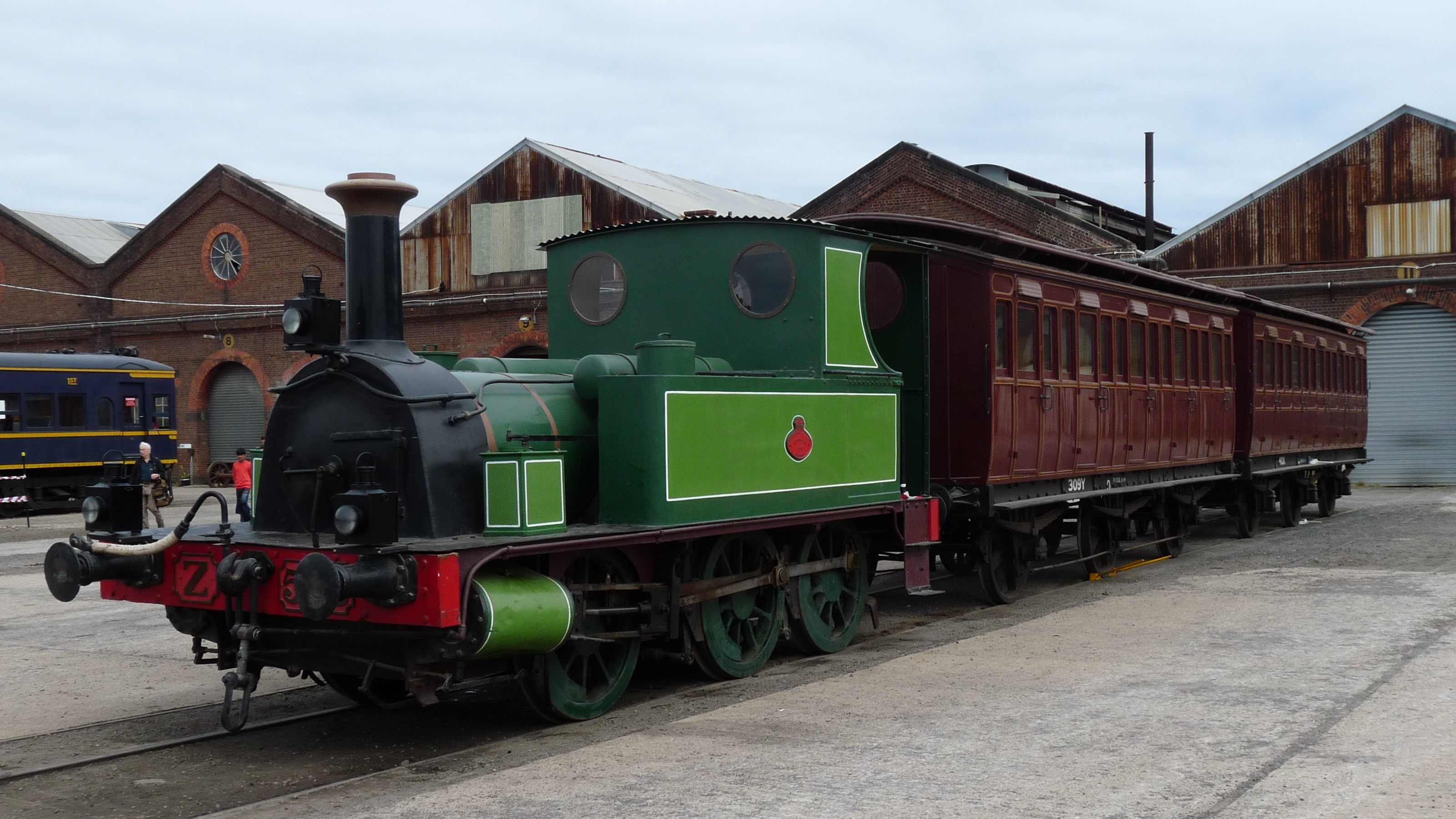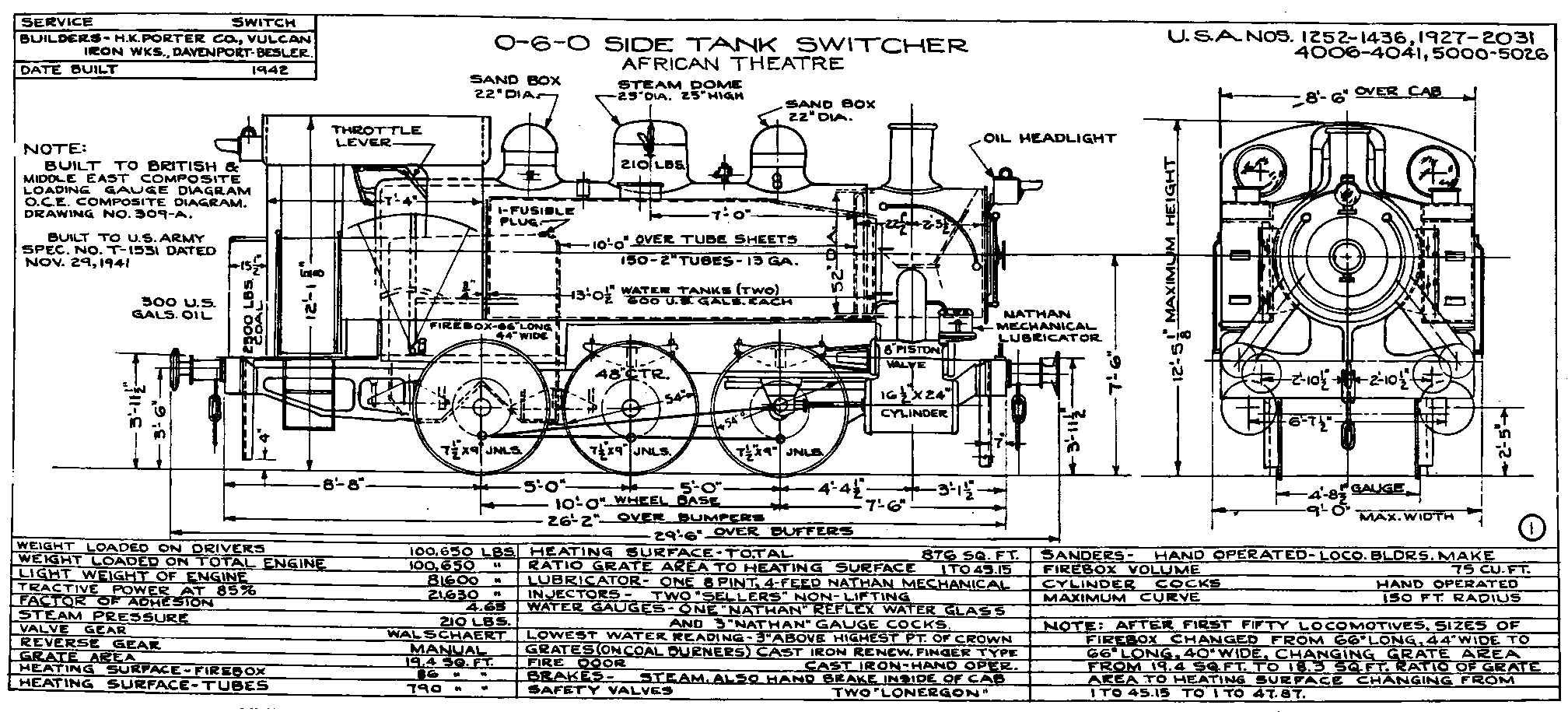|
Davenport Locomotive Works
The Davenport Locomotive Works, of Davenport, Iowa, United States, USA, was formed as the W W Whitehead Company in 1901. In 1902, the company commenced building light locomotives. The Company was renamed the Davenport Locomotive Works in 1904. In late 1930, Davenport was licensed to assemble and market R. G. LeTourneau, R G LeTourneau Inc products under the Davenport-LeTourneau brand. The agreement is believed to have ended in 1935 when LeTourneau moved to Peoria, Illinois. Davenport also sold Davenport-Winchell three-wheel roller conversions of industrial wheel tractors, Davenport-Frink snow plows, which were built in license from Frink Sno-Plows Inc, and Reynolds patented Mov-Mor rotary scrapers. In 1933, the company was again restructured and renamed the Davenport-Besler Corporation, which continued in business until 1956. William George Besler was a director at the time of the restructuring. The company acquired the locomotive business of H. K. Porter, Inc. in 1950 and from ... [...More Info...] [...Related Items...] OR: [Wikipedia] [Google] [Baidu] |
Missouri Pacific
The Missouri Pacific Railroad , commonly abbreviated as MoPac, was one of the first railroads in the United States west of the Mississippi River. MoPac was a Class I railroad growing from dozens of predecessors and mergers. In 1967, the railroad operated 9,041 miles of road and 13,318 miles of track, not including DK&S, NO&LC, T&P, and its subsidiaries C&EI and Missouri-Illinois. Union Pacific Corporation, the parent company of the Union Pacific Railroad, agreed to buy the Missouri Pacific Railroad on January 8, 1980. Lawsuits filed by competing railroads delayed approval of the merger until September 13, 1982. After the Supreme Court denied a trial to the Southern Pacific, the merger took effect on December 22, 1982. However, due to outstanding bonds of the Missouri Pacific, its full merger into the Union Pacific Railroad did not become official until January 1, 1997. History On July 4, 1851, ground was broken at St. Louis on the Pacific Railroad, the predecessor of the ... [...More Info...] [...Related Items...] OR: [Wikipedia] [Google] [Baidu] |
Kalmbach Media
Kalmbach Media (formerly Kalmbach Publishing Co.) was an American publisher of books and magazines, many of them railroad-related, located in Waukesha, Wisconsin. History The company's first publication was ''The Model Railroader'', which began publication in the summer of 1933 at 545 S. 84th Street in Milwaukee (now site of a car wash), with a cover date of January 1934. A press release announcing the magazine appeared in August 1933, but did not receive much interest. In 1940, business was good enough for Kalmbach to launch another magazine about railroads in general with the simple title of ''Trains Magazine''. From its first issue dated November 1940, it grew quickly from an initial circulation of just over 5,000. Kalmbach became exclusively a publisher when it discontinued its printing operations in 1973, opting to contract production from other printers, that spot (on the 3rd floor) would later be home to the ''Milwaukee Racine & Troy'' model railroad, which would be t ... [...More Info...] [...Related Items...] OR: [Wikipedia] [Google] [Baidu] |
State Railway Of Thailand
The State Railway of Thailand (SRT) (, abbrev. รฟท., ) is the state-owned rail operator under the jurisdiction of the Ministry of Transport (Thailand), Ministry of Transport in Thailand. History The SRT was founded as the Royal State Railways of Siam (RSR) in 1890. Chulalongkorn, King Chulalongkorn ordered the Department of Railways to be set up under the Department of Public Works and Town and Country Planning. Construction of the Bangkok railway station, Bangkok-Ayutthaya railway station, Ayutthaya railway (), the first part of the Northern Line, was started in 1890 and inaugurated on 26 March 1897. The Thon Buri railway station, Thon Buri-Phetchaburi railway station, Phetchaburi line (), later the Southern Line, was opened on 19 June 1903. The first railway commander of the RSR was Purachatra Jayakara, Prince Purachatra Jayakara, Prince of Kamphaengphet. The Northern Line was originally built as , but in September 1919 it was decided to standardize on and the Northern ... [...More Info...] [...Related Items...] OR: [Wikipedia] [Google] [Baidu] |
Denver & Rio Grande Western Railroad
The Denver and Rio Grande Western Railroad , often shortened to ''Rio Grande'', D&RG or D&RGW, formerly the Denver & Rio Grande Railroad, was an American Class I railroad company. The railroad started as a narrow-gauge line running south from Denver, Colorado, in 1870. It served mainly as a transcontinental bridge line between Denver and Ogden, Utah. The Rio Grande was also a major origin of coal and mineral traffic. The Rio Grande was a strong example of mountain railroading, with a motto of ''Through the Rockies, not around them'' and later ''Main line through the Rockies'', both referring to the Rocky Mountains. The D&RGW operated the highest mainline rail line in the United States, over the Tennessee Pass in Colorado, and the famed routes through the Moffat Tunnel and the Royal Gorge. At its height, in 1889, the D&RGW had the largest narrow-gauge railroad network in North America with of track interconnecting the states of Colorado, New Mexico, and Utah. Known fo ... [...More Info...] [...Related Items...] OR: [Wikipedia] [Google] [Baidu] |
Broad Gauge
A broad-gauge railway is a railway with a track gauge (the distance between the rails) broader than the used by standard-gauge railways. Broad gauge of , more known as Russian gauge, is the dominant track gauge in former Soviet Union countries (CIS states, Baltic states, Rail transport in Georgia (country), Georgia, Ukraine) and Rail transport in Mongolia, Mongolia. Broad gauge of , commonly known as five foot gauge, is mainly used in Rail transport in Finland, Finland. Broad gauge of , commonly known as Irish gauge, is the dominant track gauge in Ireland, the Australian state of Rail transport in Victoria, Victoria and Railways in Adelaide, Adelaide in South Australia and Rail transport in Brazil, passenger trains of Brazil. Broad gauge of , commonly known as Iberian gauge, is the dominant track gauge in Spain and Portugal. Broad gauge of , commonly known as Indian gauge, is the dominant track gauge in Indian Railways, India, Pakistan Railways, Pakistan, Bangladesh, Sri Lanka ... [...More Info...] [...Related Items...] OR: [Wikipedia] [Google] [Baidu] |
Rail Gauge
In rail transport, track gauge is the distance between the two rails of a railway track. All vehicles on a rail network must have wheelsets that are compatible with the track gauge. Since many different track gauges exist worldwide, gauge differences often present a barrier to wider operation on railway networks. The term derives from the metal bar, or gauge, that is used to ensure the distance between the rails is correct. Railways also deploy two other gauges to ensure compliance with a required standard. A ''loading gauge'' is a two-dimensional profile that encompasses a cross-section of the track, a rail vehicle and a maximum-sized load: all rail vehicles and their loads must be contained in the corresponding envelope. A '' structure gauge'' specifies the outline into which structures (bridges, platforms, lineside equipment etc.) must not encroach. Uses of the term The most common use of the term "track gauge" refers to the transverse distance between the inside surfaces ... [...More Info...] [...Related Items...] OR: [Wikipedia] [Google] [Baidu] |
Variable Gauge
Variable gauge systems allow railway vehicles to travel between two railways with different track gauges. Vehicles are equipped with variable gauge axles (VGA). The gauge is altered by driving the train through a gauge changer installed at the break of gauge which moves the wheels to the gauge desired. Variable gauge systems exist within the internal network of Spain, and are installed on international links between Spain/France (Spanish train), Sweden/Finland (Swedish train), Poland/Lithuania (Polish train) and Poland/Ukraine Ukraine is a country in Eastern Europe. It is the List of European countries by area, second-largest country in Europe after Russia, which Russia–Ukraine border, borders it to the east and northeast. Ukraine also borders Belarus to the nor ... (Polish train). A system for changing gauge without the need to stop is in widespread use for passenger traffic in Spain, for services run on a mix of dedicated high-speed lines (using Standard gauge) and ... [...More Info...] [...Related Items...] OR: [Wikipedia] [Google] [Baidu] |
Switcher Locomotive
A switcher locomotive (American English), shunter locomotive (British English), station pilot (British English), or shifter locomotive (Pennsylvania Railroad terminology) is a locomotive used for maneuvering railway vehicles over short distances. Switchers do not usually move train A train (from Old French , from Latin">-4; we might wonder whether there's a point at which it's appropriate to talk of the beginnings of French, that is, when it wa ... , from Latin , "to pull, to draw") is a series of connected vehicles th ...s over long distances. Instead, they typically assemble trains in order for another locomotive to take over. Switchers often operate in a railyard or make short transfer runs. They may serve as the primary motive power on short branch lines or switching and terminal railroads. A hybrid type known as a road switcher can both shunt and haul trains. Switchers are optimized for their role, being relatively low-powered but with a high starting tractive eff ... [...More Info...] [...Related Items...] OR: [Wikipedia] [Google] [Baidu] |
World War II
World War II or the Second World War (1 September 1939 – 2 September 1945) was a World war, global conflict between two coalitions: the Allies of World War II, Allies and the Axis powers. World War II by country, Nearly all of the world's countries participated, with many nations mobilising all resources in pursuit of total war. Tanks in World War II, Tanks and Air warfare of World War II, aircraft played major roles, enabling the strategic bombing of cities and delivery of the Atomic bombings of Hiroshima and Nagasaki, first and only nuclear weapons ever used in war. World War II is the List of wars by death toll, deadliest conflict in history, causing World War II casualties, the death of 70 to 85 million people, more than half of whom were civilians. Millions died in genocides, including the Holocaust, and by massacres, starvation, and disease. After the Allied victory, Allied-occupied Germany, Germany, Allied-occupied Austria, Austria, Occupation of Japan, Japan, a ... [...More Info...] [...Related Items...] OR: [Wikipedia] [Google] [Baidu] |
0-6-0
is the Whyte notation designation for steam locomotives with a wheel arrangement of no leading wheels, six powered and coupled driving wheels on three axles, and no trailing wheels. Historically, this was the most common wheel arrangement used on both Tender (rail), tender and tank locomotives in versions with both Cylinder (locomotive), inside and outside cylinders. In the United Kingdom, the Whyte notation of wheel arrangement was also often used for the classification of electric and diesel-electric locomotives with side-rod coupled driving wheels. Under the UIC classification, popular in Europe, this wheel arrangement is written as C if the wheels are coupled with rods or gears, or Co if they are independently driven, the latter usually being electric and diesel-electric locomotives. Overview History The 0-6-0 configuration was the most widely used wheel arrangement for both Tender (rail), tender and tank locomotive, tank steam locomotives. The type was also widely used fo ... [...More Info...] [...Related Items...] OR: [Wikipedia] [Google] [Baidu] |
USATC S100 Class
The United States Army Transportation Corps (USATC) S100 Class is a steam locomotive that was designed for Shunting (rail), switching (shunting) duties in Europe and North Africa during World War II. After the war, they were used on railways in Austria, China, Egypt, France, Great Britain, Greece, Iran, Iraq, Israel, Italy, the Netherlands, Mandatory Palestine, Palestine, the United States, and Socialist Federal Republic of Yugoslavia, Yugoslavia. Wartime development and use The S100 is a Tank locomotive#Side tank, side tank designed by Col. Howard G. Hill. In 1942, the USATC ordered 382 S100s from Davenport Locomotive Works of Iowa, H. K. Porter, Inc, of Pittsburgh, Pennsylvania, Pittsburgh and Vulcan Iron Works (Wilkes-Barre), Vulcan Iron Works of Wilkes-Barre. They were shipped to the War Department (United Kingdom), British War Department in 1943. They were stored in Britain until 1944. After D-Day, most went overseas but some remained in store. Construction Use after ... [...More Info...] [...Related Items...] OR: [Wikipedia] [Google] [Baidu] |








